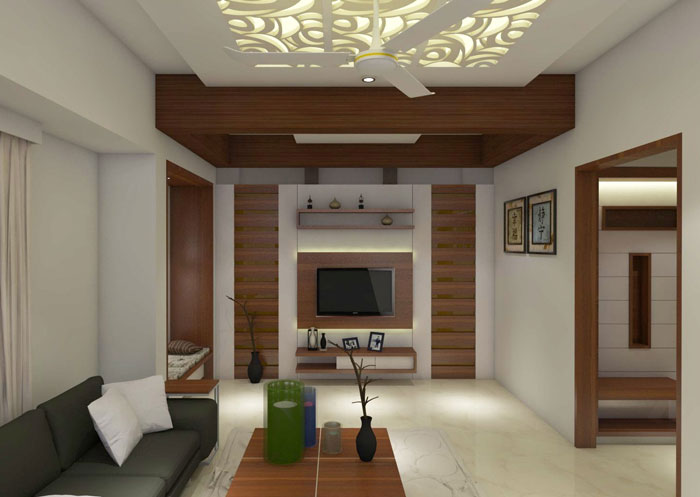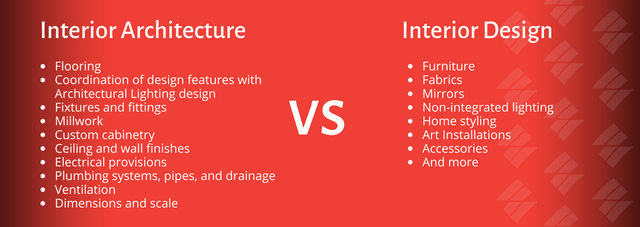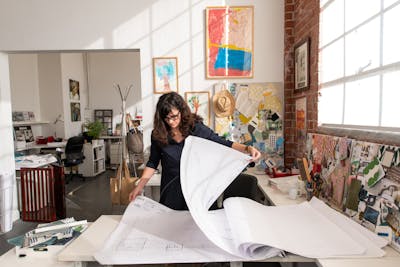Explore the Expertise of Hampshire Design Experts for Unique Residential Projects
Explore the Expertise of Hampshire Design Experts for Unique Residential Projects
Blog Article
The Art of Equilibrium: Just How Interior Design and Home Architect Collaborate for Stunning Outcomes
In the world of home style, striking a balance between aesthetics and performance is no little task. This delicate balance is accomplished through the unified cooperation between indoor designers and engineers, each bringing their distinct expertise to the table. The outcome? Areas that are not just visually sensational yet likewise very habitable. Nonetheless, this best blend is not constantly simple to obtain. Remain with us as we explore the details of this collaborative procedure and its transformative influence on home layout.
Understanding the Core Differences In Between Interior Decoration and Home Architecture
While both Interior Design and home architecture play necessary functions in creating cosmetically pleasing and functional rooms, they are naturally various self-controls. Home architecture largely concentrates on the structural aspects of the home, such as constructing codes, safety and security policies, and the physical building of the space. It deals with the 'bones' of the structure, collaborating with spatial dimensions, load-bearing wall surfaces, and roof designs. On the other hand, Interior Design is much more worried with enhancing the aesthetic and sensory experience within that framework. It involves picking and preparing furniture, selecting color pattern, and incorporating ornamental elements. While they operate in tandem, their duties, obligations, and locations of expertise diverge substantially in the production of an unified home setting.
The Harmony In Between Home Architecture and Interior Decoration
The synergy in between home design and Interior Design hinges on a common vision of layout and the enhancement of functional looks. When these 2 areas line up sympathetically, they can transform a home from average to amazing. This partnership requires a deeper understanding of each self-control's principles and the ability to develop a cohesive, aesthetically pleasing setting.
Unifying Layout Vision
Unifying the vision for home architecture and Interior Design can develop a harmonious space that is both useful and visually pleasing. The equilibrium starts with an integrated attitude; architects and indoor developers collaborate, each bringing their proficiency. This unison of ideas develops the layout vision, a plan that overviews the task. This common vision is important for uniformity throughout the home, guaranteeing a liquid transition from exterior architecture to interior areas. It advertises a collaborating method where building aspects enhance Interior Design elements and vice versa. The result is a cohesive living area that reflects the house owner's individuality, preference, and way of life. Therefore, unifying the style vision is essential in blending architecture and Interior Design for spectacular results.
Enhancing Practical Aesthetics
Exactly how does the synergy between home style and Interior Design improve functional appearances? This harmony enables the creation of rooms that are not only aesthetically enticing yet likewise pleasantly functional. Engineers lay the groundwork with their architectural layout, ensuring that the area is reliable and functional. The indoor developer after that enhances this with meticulously selected components that boost the aesthetic appeals without jeopardizing the performance. This unified partnership can lead to homes that are both lovely and livable. For instance, a designer could design a house with high ceilings and large windows. The indoor designer can then emphasize these features with large drapes and high plants, specifically, therefore improving the aesthetic charm while preserving the sensible advantages of all-natural light and spaciousness.
Value of Collaboration in Creating Balanced Spaces
The cooperation between indoor developers and architects is essential in developing well balanced rooms. It brings consistency in between style and style, providing birth to spaces that are not only aesthetically pleasing yet likewise functional. Discovering successful collective strategies can provide understandings into just how this synergy can be properly attained.
Integrating Layout and Style
Equilibrium, a vital facet of both Interior Design and style, can only really be accomplished when these 2 fields operate in harmony. This consistency is not just a visual consideration; it impacts the capability, longevity, and inevitably, the livability of a space. Inside developers and architects have to understand each other's duties, respect their knowledge, and interact efficiently. They have to take into consideration the interplay of structural elements with decor, the flow of spaces, and the impact of light and color. This collective procedure causes a cohesive, well balanced layout where every element contributes and has a purpose to the overall aesthetic. As a result, integrating layout and design is not simply regarding creating beautiful areas, but concerning crafting areas that work effortlessly for their inhabitants.
Effective Collaborative Methods

Case Studies: Successful Combination of Style and Style
Analyzing numerous situation researches, it comes to be obvious how the effective assimilation of Interior Design and design can change a space. The Glass Home in Connecticut, renowned for its minimalistic style, is one such instance. Designer Philip Johnson and indoor developer Mies van der Rohe collaborated to develop an unified equilibrium between the inside and the structure, resulting in a seamless circulation from the exterior landscape to the inner living quarters. One more exemplar is the Fallingwater Residence in Pennsylvania. check here Engineer Frank Lloyd Wright and interior developer Edgar Kaufmann Jr.'s collective initiatives lead to a strikingly one-of-a-kind home that blends with its natural environments. These study underscore the profound impact of a successful layout and style collaboration.

Getting Over Challenges in Layout and Style Cooperation
Despite the undeniable benefits of a successful cooperation in between Interior Design and design, it is not without its difficulties. Communication problems can emerge, as both events might utilize various terms, understandings, and approaches in their job. This can result in misunderstandings and hold-ups in project completion. One more significant difficulty is the harmonizing act of visual appeals and performance. Engineers may focus on architectural integrity and safety, while designers focus on comfort and design. The combination of these purposes can be intricate. In addition, budget plan and timeline constraints typically add stress, potentially triggering rifts in the partnership. Reliable interaction, common understanding, and compromise are vital to conquer these difficulties and attain a unified and successful collaboration.

Future Trends: The Evolving Partnership In Between Home Architects and Interior Designers
As the world of home design remains to evolve, so does the relationship between architects and indoor developers. The fad leans towards a more incorporated and collective technique, damaging devoid of typical functions. Engineers are no much longer only focused on structural stability, however additionally take part in improving aesthetic appeal - Winchester architect. Alternatively, interior designers are embracing technical aspects, affecting total layout and performance. This progressing symbiosis is driven by improvements in innovation and the expanding need for areas that are not only visually pleasing yet additionally sensible and sustainable. The future assures an extra natural, innovative, and flexible method to home layout, as developers and architects remain to blur the lines, promoting a relationship that absolutely symbolizes the art of equilibrium.
Final thought
The art of balance in home design is accomplished with the unified partnership between indoor designers and designers. An understanding of each various other's techniques, reliable interaction, and shared vision are important in developing visually magnificent, functional, and welcoming rooms. Despite obstacles, this collaboration fosters growth and advancement in design. As the connection between home designers and indoor designers evolves, it will certainly remain to shape future fads, improving convenience, efficiency, and individual expression in our space.
While both indoor layout and home architecture play vital roles in developing cosmetically pleasing and practical areas, they are naturally various disciplines.The synergy in between home architecture and interior design exists in a shared vision of style and the improvement of functional looks.Linking the over at this website vision for home design and indoor style can produce an unified living room that is both functional and cosmetically pleasing. Therefore, unifying the design vision is critical in blending style and indoor design for magnificent outcomes.
Exactly how does the synergy between home style and interior style boost functional looks? (Winchester architect)
Report this page